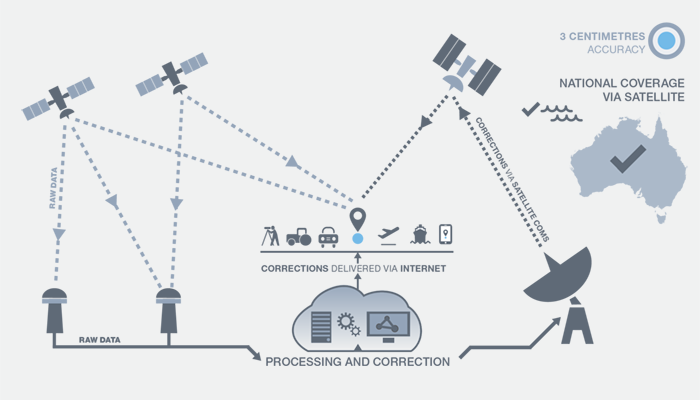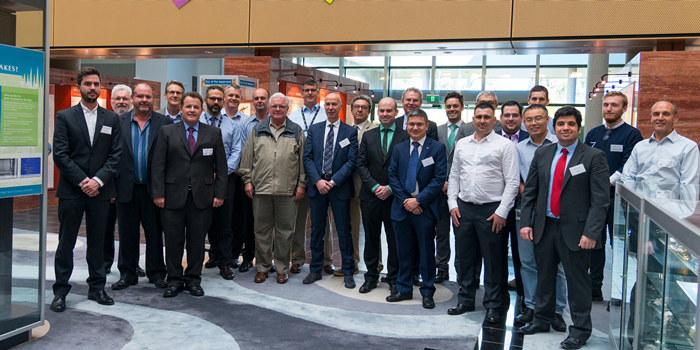News
Key partners meet to progress SBAS test-bed project
Published:22 March 2017
Key partners meet to progress SBAS test-bed project
Geoscience Australia and the key partners of the Satellite-Based Augmented System (SBAS) test-bed project have met in Canberra to review the project plan and schedule of the project; and to finalise the next steps to getting the project "off the ground".
The SBAS test-bed project will trial next generation SBAS technology across Australia and New Zealand. The project is led by Geoscience Australia in close cooperation with Land Information NZ (LINZ), with support from key space industry partners Lockheed Martin, Inmarsat and GMV, and the CRC for Spatial Information (CRCSI). The project aims to demonstrate the benefits of this technology in the Asia Pacific region, particularly through the early adoption of this technology in emerging applications.
The SBAS test-bed project is the first step towards improving the accuracy of GPS and other Global Navigation Satellite Systems via Geoscience Australia's National Positioning Infrastructure Capability (NPIC) program. The application of SBAS technology offers a range of potential safety, productivity, efficiency and environmental benefits to many industries, including transport, agriculture, construction and resources. The ultimate goal is for highly accurate and trustworthy positioning information to be accessible anytime and anywhere across Australia and New Zealand.
The test-bed project will focus on testing two new satellite positioning technologies - next generation SBAS, also known as SBAS-2, and Precise Point Positioning -which provide positioning accuracies of several decimetres and five centimetres respectively. These technologies have never been widely tested anywhere before, however GMV, Inmarsat and Lockheed Martin have extensive experience in implementing SBAS generation 1 positioning technology around the world.

Diagram explaining the Satellite-Based Augmented System (SBAS) test-bed project
This is the first time SBAS-2 has been tested anywhere in the world, and is particularly useful because it will exploit the availability of the new European Galileo constellation of satellites as well as the Global Positioning System (GPS) to provide improved accuracy and reliability. SBAS-2 will also be multi-frequency enabling improved atmospheric corrections so it won't suffer performance degradation due to ionospheric storms which can limit SBAS in equatorial regions including Northern Australia.
The meeting discussed next steps and reviewed the current design of the SBAS test-bed, to ensure that the end design will achieve the desired results for the project. The first transmissions of an SBAS signal are expected by June 2017, with multi-constellation multi-frequency SBAS signals due for transmission by October 2017.
Geoscience Australia and the CRCSI are working towards calling for Expressions of Interest (EOI) from organisations who wish to undertake testing of SBAS in a number of industries including agriculture, aviation, construction, mining, maritime, road, spatial, and utilities as part of the test-bed. The call for EOIs from industry-specific partners for the testing of SBAS across the nine industry sectors is due to be released in the coming weeks. The project team also discussed software and hardware requirements for testing the signals. These requirements will be communicated to stakeholders during the EOI process.

Satellite-Based Augmented System (SBAS) test-bed project partners meeting
Further information:
Contact:
Phone:
Email:




